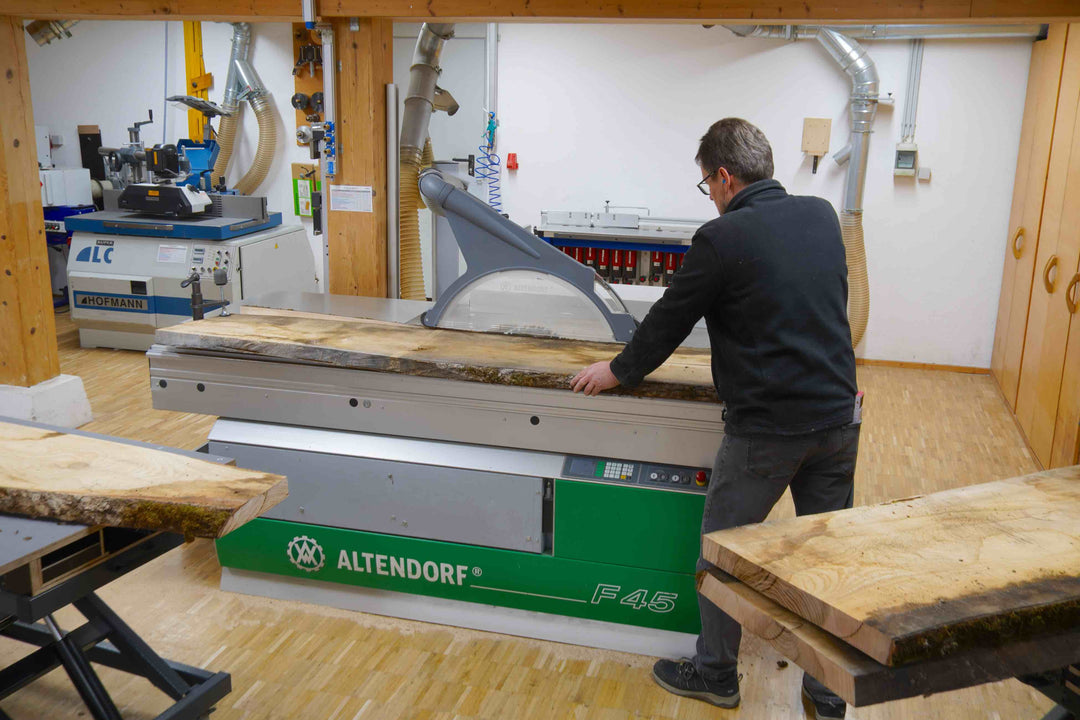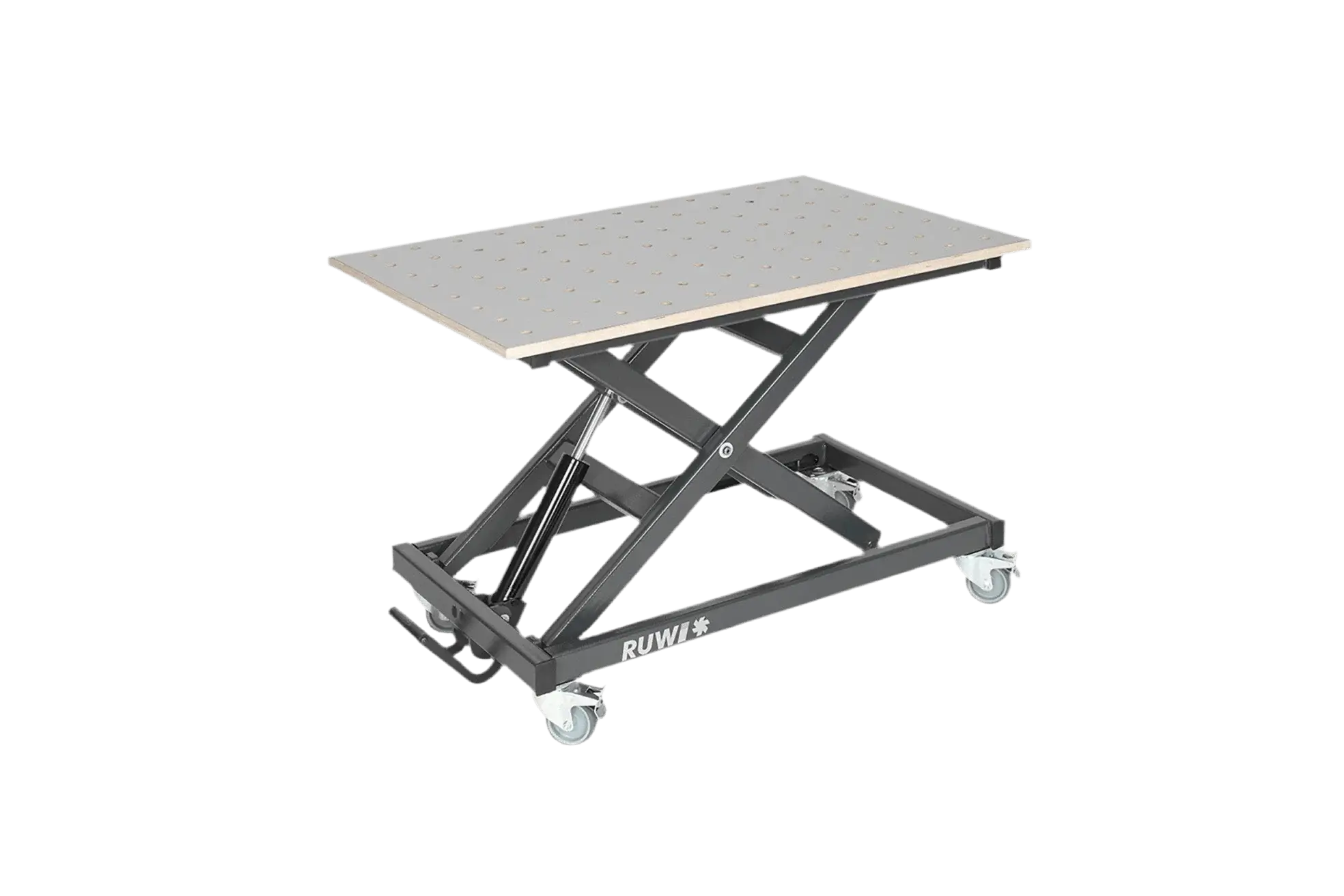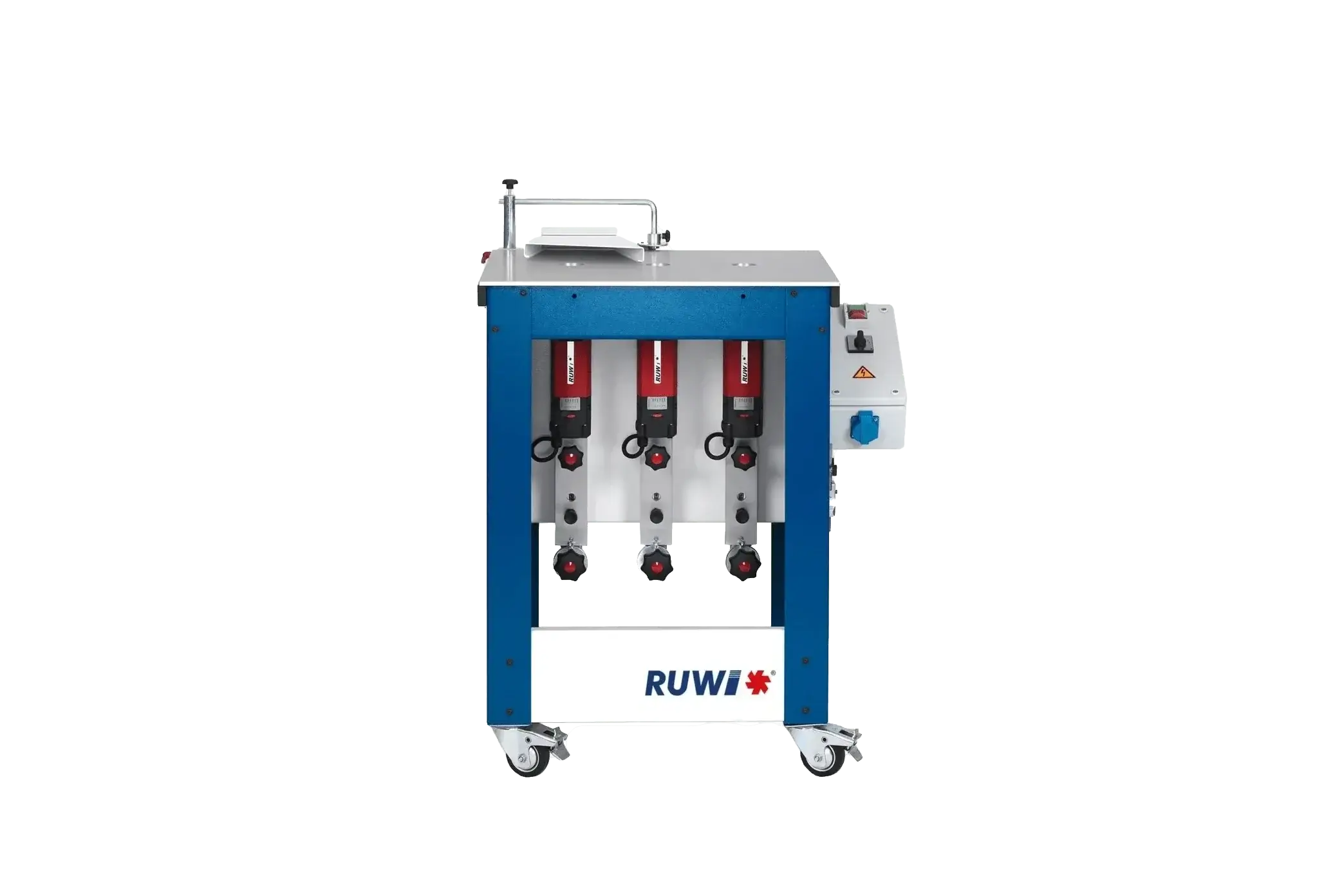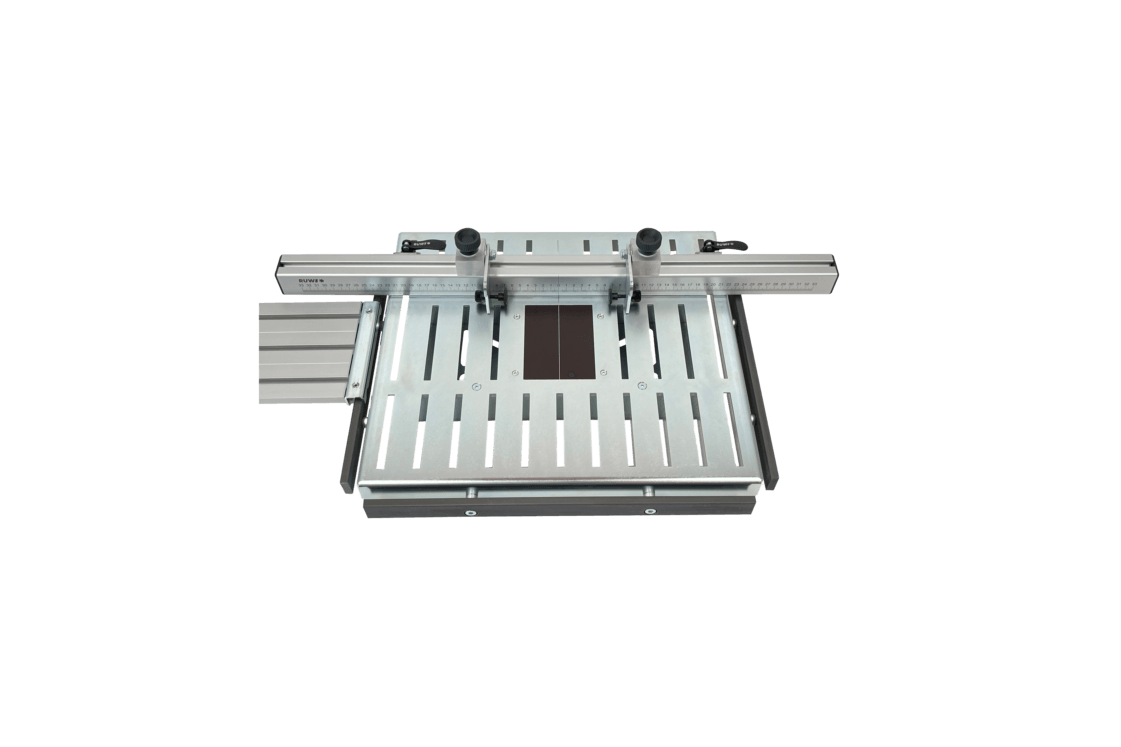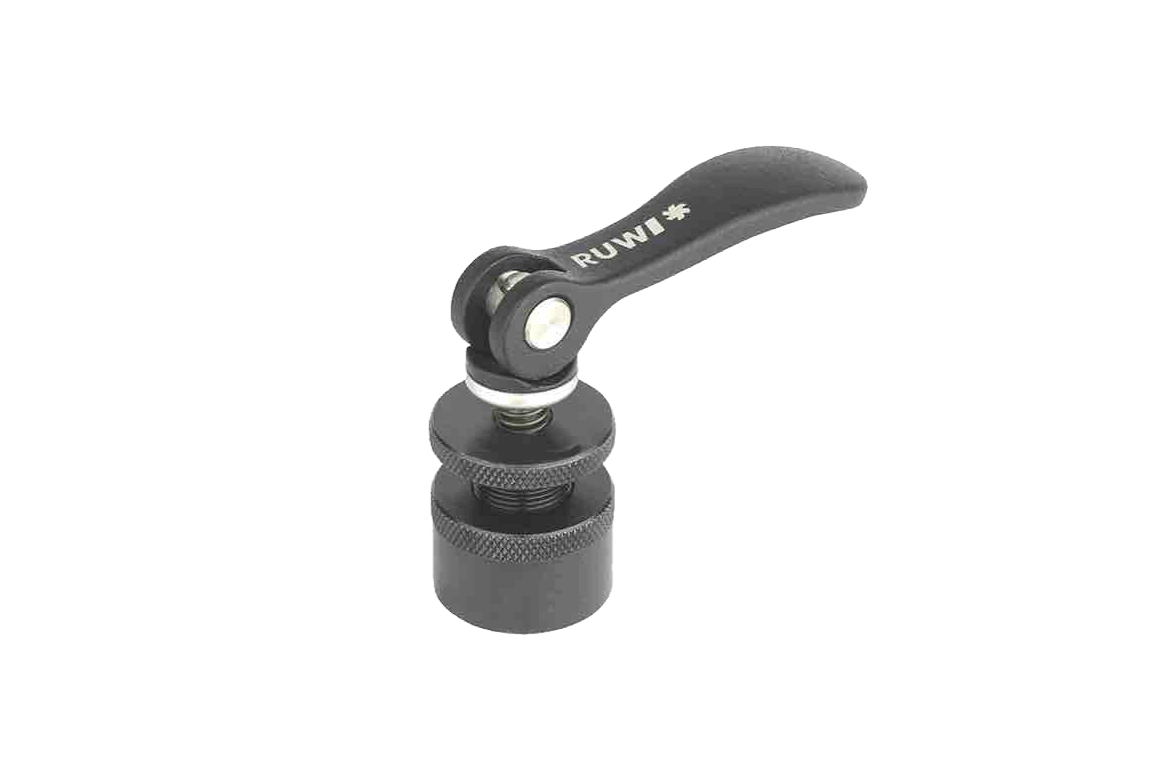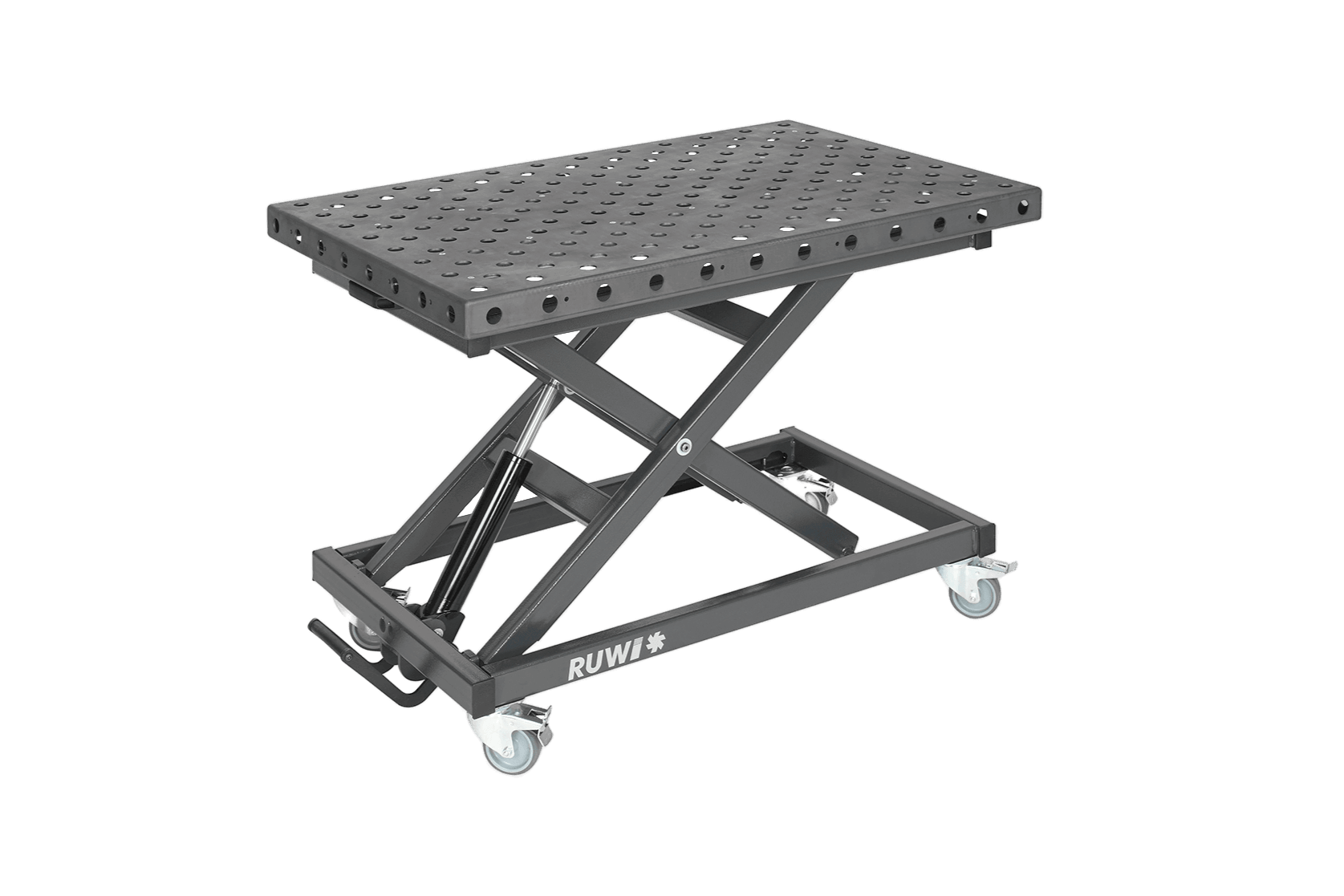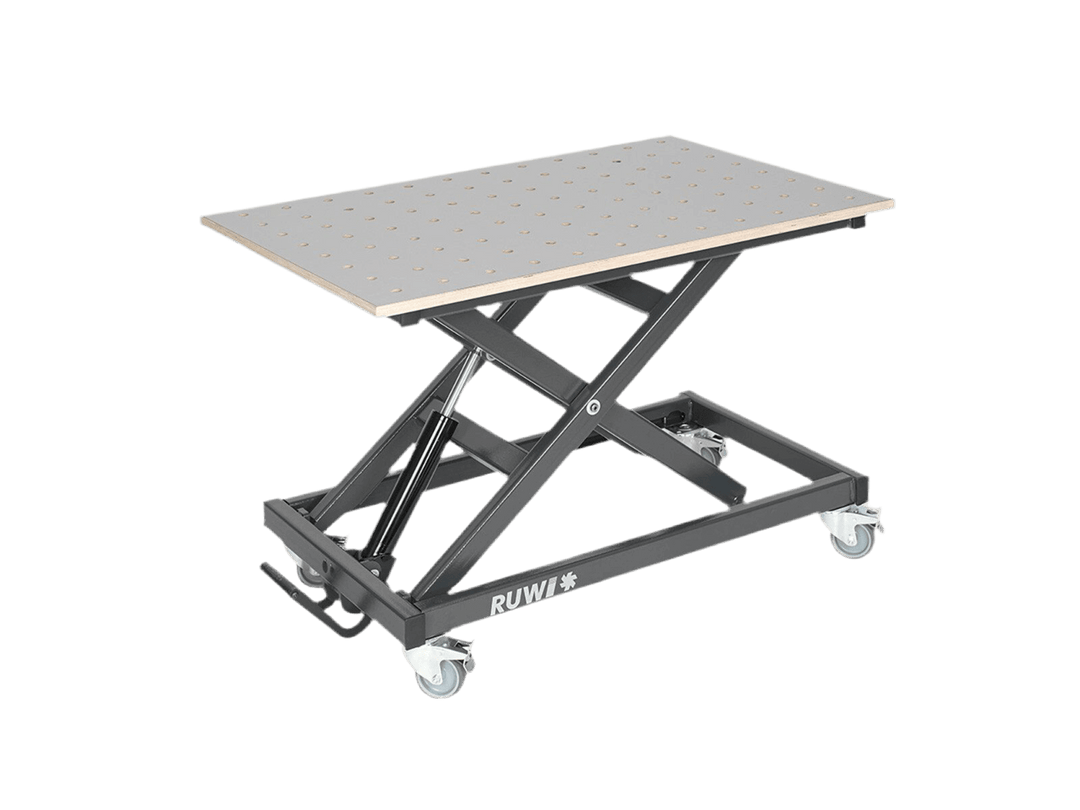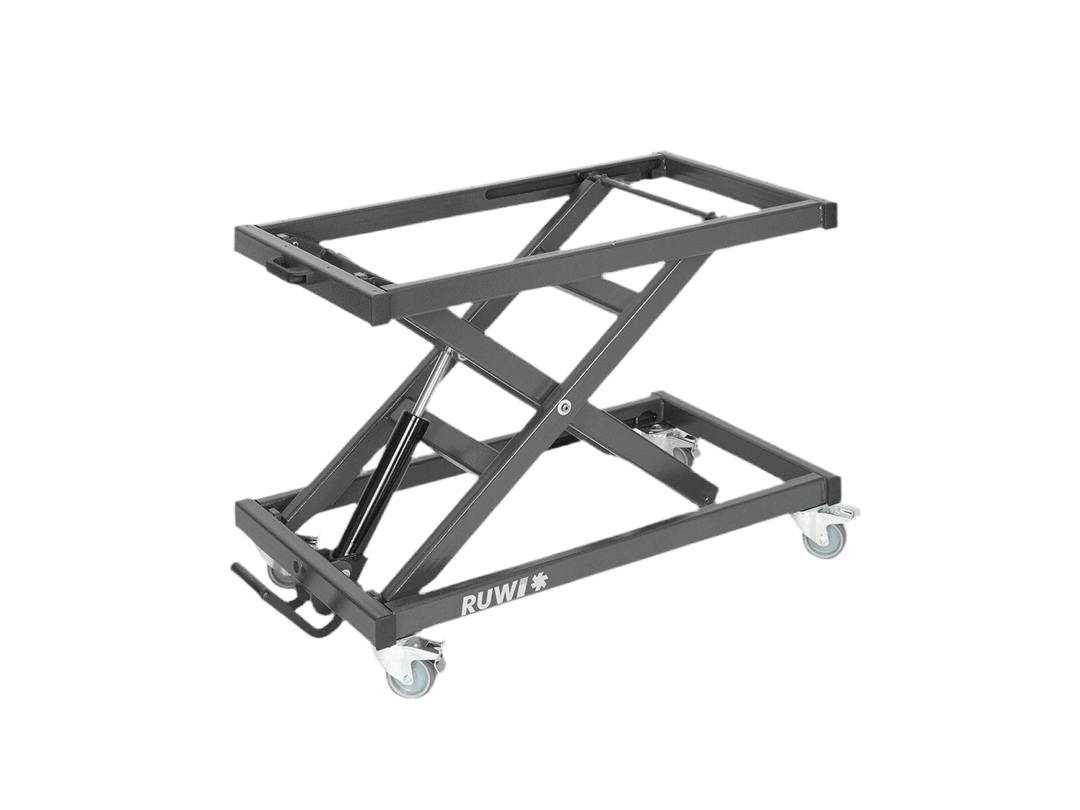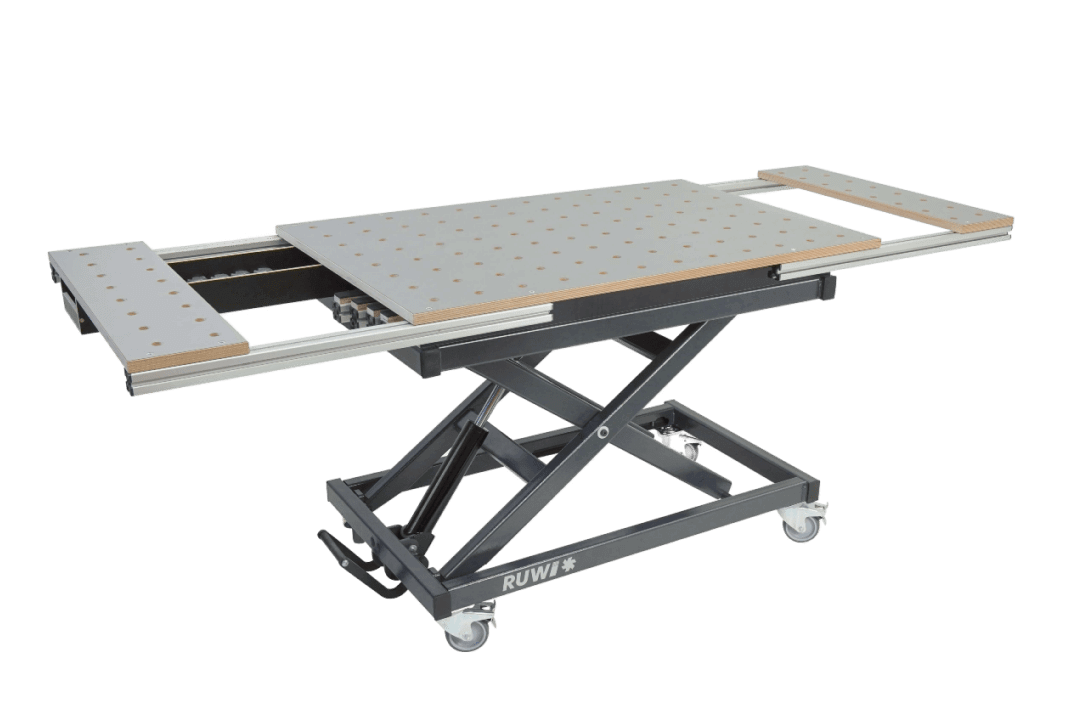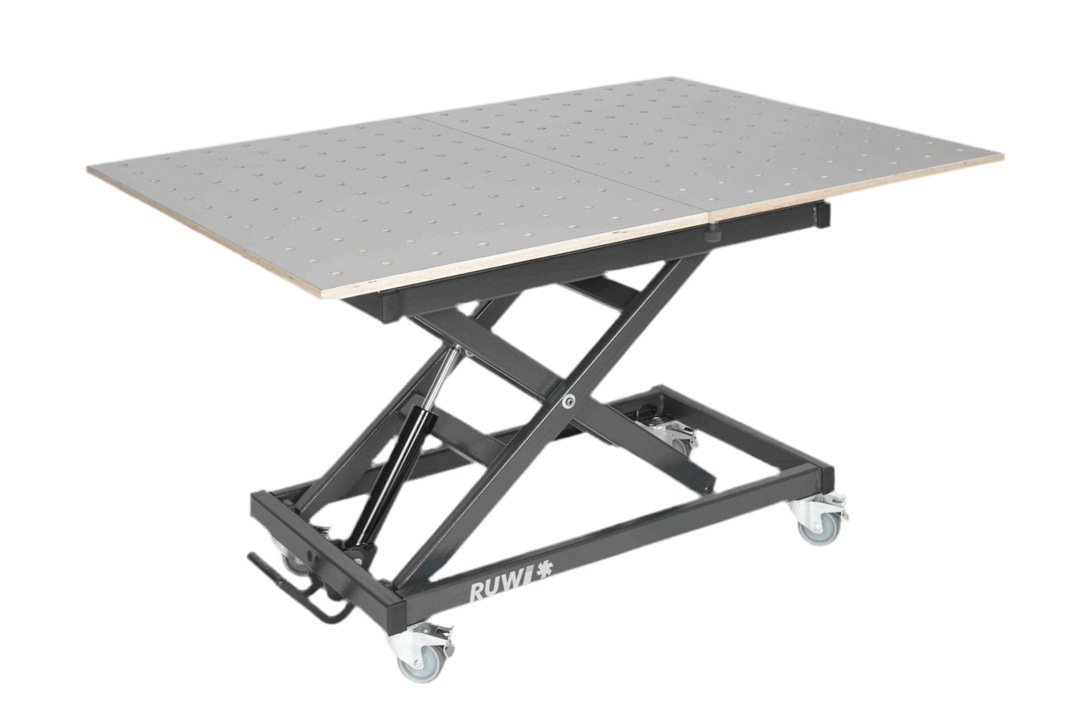Compact guide to carpentry workstations
A good carpentry workstation is not created by chance. It is the result of well thought-out planning, good organization and many small experiences from everyday workshop life.
Ergonomics
Your working height determines how well and efficiently you work. Rule of thumb: The surface of the workbench should be at about the same height as your wrist when you are standing in a relaxed position. Finer assembly work should be done a little higher, more powerful work such as planing lower down.
Practical example from our own workshop:
We have replaced our traditional planing benches with height-adjustable mobile lifting tables. This allows us to adapt each activity individually - the difference is clearly noticeable, and not just in the evening.
Add anti-fatigue mats to your workstation, place frequently used tools at handle height and always store heavy materials at hip height or transport them using a pallet truck to protect your back. Small aids save energy every day.
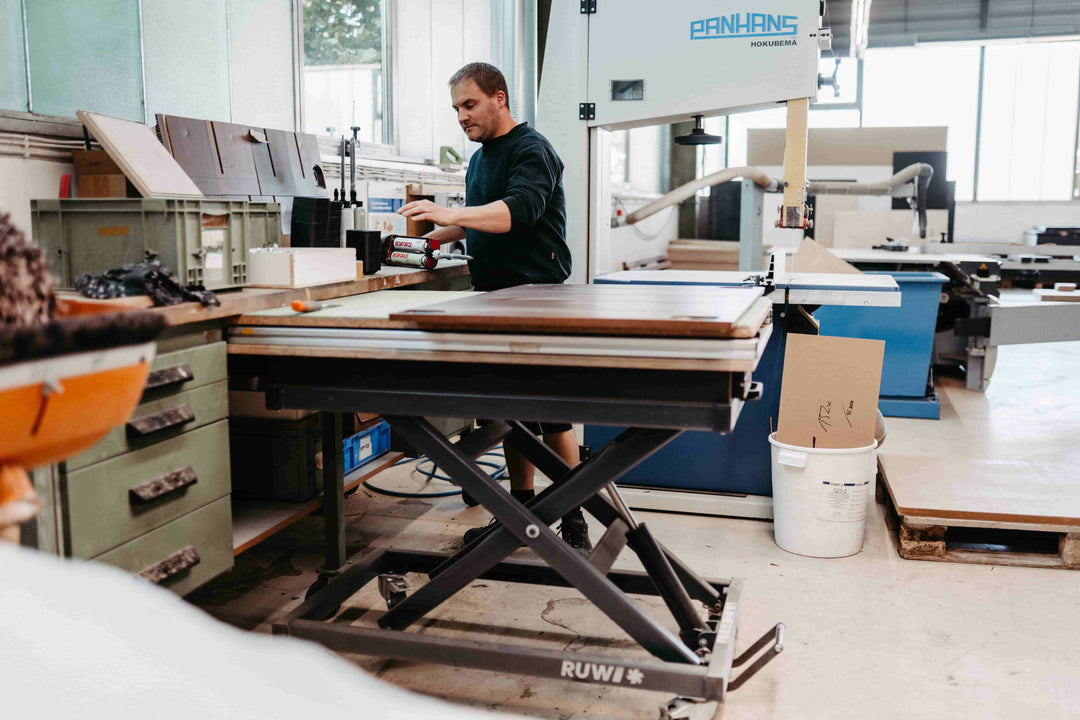
Light and climate: feeling good means working better
Lighting is crucial. Combine planar ceiling luminaires with targeted task lights. Look for dust-protected luminaires with high color fidelity (CRI) to realistically assess wood colors.
Your workshop climate should remain stable between 15 and 18 °C all year round to protect wood and machinery from damage. Short bursts of ventilation improve air quality and health. Natural light is good.
Floors and coverings: Robust and clean
A smooth, robust industrial floor - ideally sealed concrete with an epoxy resin coating - will stand the test of time. Alternatively, wooden flooring offers pleasant standing comfort, but must be sealed. Make sure there are no thresholds to facilitate the transportation of materials.
Extraction and dust management: health and cleanliness
An efficient extraction system protects your health, keeps the workshop clean and increases the quality of your work. Tip: Place the extraction motor outside the workshop to reduce noise and ensure a sufficient supply of fresh air.
Mobile air filters also help to remove fine dust from the air. The closer you extract the dust to its source, the better for your health and the cleanliness of your workpieces.
Order and organization
Clear systems create order: every item needs a fixed place, ideally close to where it is used. Use modular systems such as labeled systainers, small parts magazines or mobile tower shelves for flexibility and clarity.
Digital tools such as tablets with dust-protected holders enable quick access to plans and parts lists directly at the workplace.
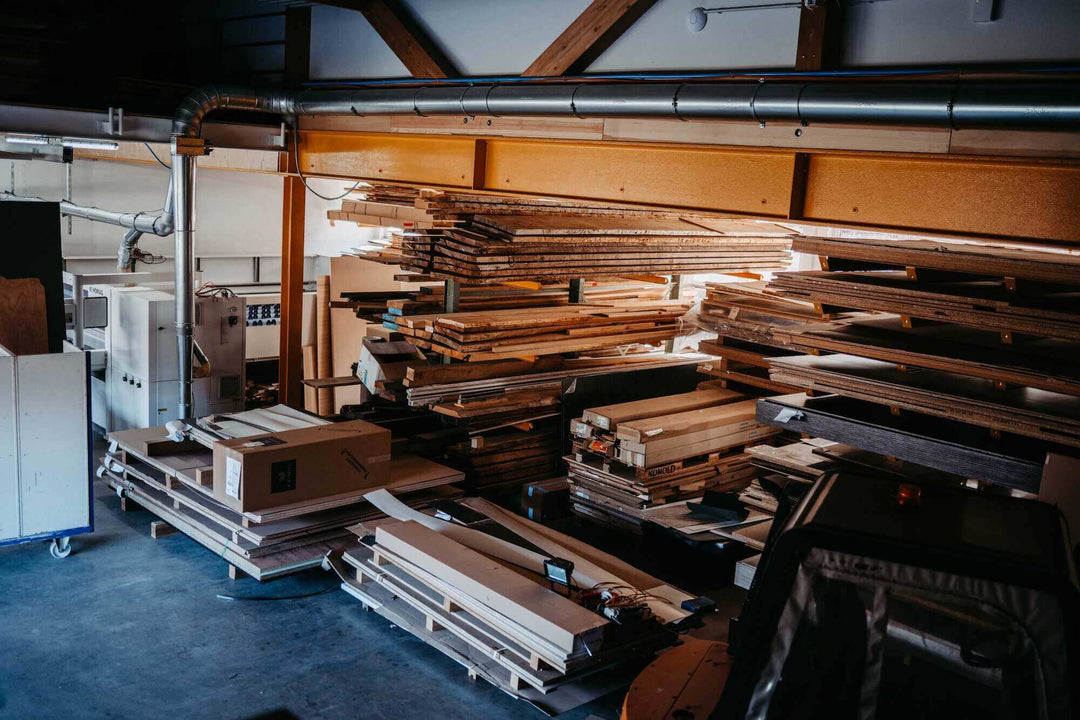
Workflow and material flow: from planning to practice
Organize your workshop so that raw materials move from station to station in as straight a line as possible - from cutting to surface finishing. Use trolleys or mobile pallets to avoid unnecessary relocation and damage. Clear storage locations per job create an overview and reduce search times.
Conclusion: Your workshop - always on the move
A carpentry workstation is constantly evolving. Keep an open mind, try things out, improve - this is how your perfect workshop grows organically from practice. Use these tips to keep your business healthy, safe and efficient.
